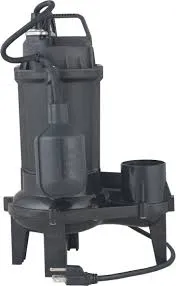English
- Afrikaans
- Albanian
- Amharic
- Arabic
- Armenian
- Azerbaijani
- Basque
- Belarusian
- Bengali
- Bosnian
- Bulgarian
- Catalan
- Cebuano
- Corsican
- Croatian
- Czech
- Danish
- Dutch
- English
- Esperanto
- Estonian
- Finnish
- French
- Frisian
- Galician
- Georgian
- German
- Greek
- Gujarati
- Haitian Creole
- hausa
- hawaiian
- Hebrew
- Hindi
- Miao
- Hungarian
- Icelandic
- igbo
- Indonesian
- irish
- Italian
- Japanese
- Javanese
- Kannada
- kazakh
- Khmer
- Rwandese
- Korean
- Kurdish
- Kyrgyz
- Lao
- Latin
- Latvian
- Lithuanian
- Luxembourgish
- Macedonian
- Malgashi
- Malay
- Malayalam
- Maltese
- Maori
- Marathi
- Mongolian
- Myanmar
- Nepali
- Norwegian
- Norwegian
- Occitan
- Pashto
- Persian
- Polish
- Portuguese
- Punjabi
- Romanian
- Russian
- Samoan
- Scottish Gaelic
- Serbian
- Sesotho
- Shona
- Sindhi
- Sinhala
- Slovak
- Slovenian
- Somali
- Spanish
- Sundanese
- Swahili
- Swedish
- Tagalog
- Tajik
- Tamil
- Tatar
- Telugu
- Thai
- Turkish
- Turkmen
- Ukrainian
- Urdu
- Uighur
- Uzbek
- Vietnamese
- Welsh
- Bantu
- Yiddish
- Yoruba
- Zulu
Telephone: +86 13120555503
Email: frank@cypump.com
Nov . 19, 2024 21:29 Back to list
vertical cantilever sump pump
Understanding Vertical Cantilever Sump Pumps A Comprehensive Overview
Vertical cantilever sump pumps are essential components used in various industrial and municipal applications where the removal of accumulated water or other liquids is necessary. Their innovative design allows for efficient operation in environments where space is limited and challenges such as deep sumps or difficult access points exist. This article delves into the features, benefits, and applications of vertical cantilever sump pumps, helping readers understand their significance in today’s pumping solutions.
What is a Vertical Cantilever Sump Pump?
A vertical cantilever sump pump is a type of pump that is designed to sit in a sump or pit, with the motor mounted above the liquid surface while the pump impeller is submerged. This configuration prevents the motor from being exposed to the liquid, thus prolonging its life and reducing maintenance costs. The cantilever design refers to the shaft being supported above the pump casing, minimizing friction and wear on bearings typically found in other pump designs.
These pumps are particularly advantageous when dealing with liquids that may contain solids, slurries, or other particulates. The vertical orientation allows for a more compact installation, making it ideal for limited spaces where traditional horizontal pumps cannot fit.
Key Features
1. Durability and Reliability Vertical cantilever sump pumps are constructed using robust materials such as cast iron and stainless steel. This enhances their durability and ability to withstand harsh operating conditions, including corrosive environments and abrasive materials.
2. Maintenance Accessibility Since the motor is mounted above the liquid level, maintenance becomes significantly easier. There’s no need to deal with dewatering the sump or risking exposure to hazardous liquids when servicing the pump.
3. Configurable Designs These pumps can be tailored to meet specific requirements. They are available in various sizes, styles, and configurations, allowing customization based on the liquid’s characteristics and the installation environment.
vertical cantilever sump pump

4. Efficient Operation Vertical cantilever sump pumps are designed for efficient fluid transfer. Their unique design enables them to pump liquids at a steady rate while minimizing energy consumption, thus reducing operational costs.
Applications
1. Wastewater Management Municipalities and industries often utilize vertical cantilever sump pumps to manage wastewater in treatment facilities. They effectively handle solid-laden fluids, ensuring smooth operation in drainage systems.
2. Mining and Construction In sectors such as mining and construction, these pumps are crucial for dewatering operations. They efficiently manage seepage and water accumulation in pits and trenches, which is vital for safety and operational efficiency.
3. Industrial Processes Many manufacturing processes generate wastewater that needs to be pumped out. Vertical cantilever sump pumps are well-suited for such applications, where reliability and cleanliness are paramount.
4. Flood Control During heavy rains or flooding, these pumps help in quickly removing excess water from basements, parking garages, or low-lying areas, preventing damage and hazards.
Conclusion
Vertical cantilever sump pumps play a vital role in diverse sectors by providing effective and reliable solutions for managing liquids. Their unique structure offers numerous advantages, including durability, ease of maintenance, and operational efficiency. As industries continue to evolve, the demand for innovative pumping solutions like the vertical cantilever sump pump will likely increase. Understanding the capabilities and applications of these pumps signifies their indispensable value in water management and industrial processes. Whether you are in municipal, industrial, or construction sectors, investing in a vertical cantilever sump pump can lead to significant improvements in efficiency and reliability in liquid handling applications.
-
ISG Series Pipeline Pump - Chi Yuan Pumps | High Efficiency, Durable Design
NewsAug.01,2025
-
Advanced Flue Gas Desulfurization Pump with GPT-4 Turbo | Durable & Efficient
NewsJul.31,2025
-
ISG Series Vertical Pipeline Pump - Chi Yuan Pumps | Advanced Hydraulic Design&Durable Construction
NewsJul.31,2025
-
ISG Series Vertical Pipeline Pump - Chi Yuan Pumps | Energy Efficient & Low Noise
NewsJul.31,2025
-
pipeline pump - Chi Yuan Pumps Co., LTD.|High Efficiency&Low Noise
NewsJul.31,2025
-
ISG Series Vertical Pipeline Pump - Chi Yuan Pumps Co., LTD.|High Efficiency, Energy Saving, Low Noise
NewsJul.30,2025










